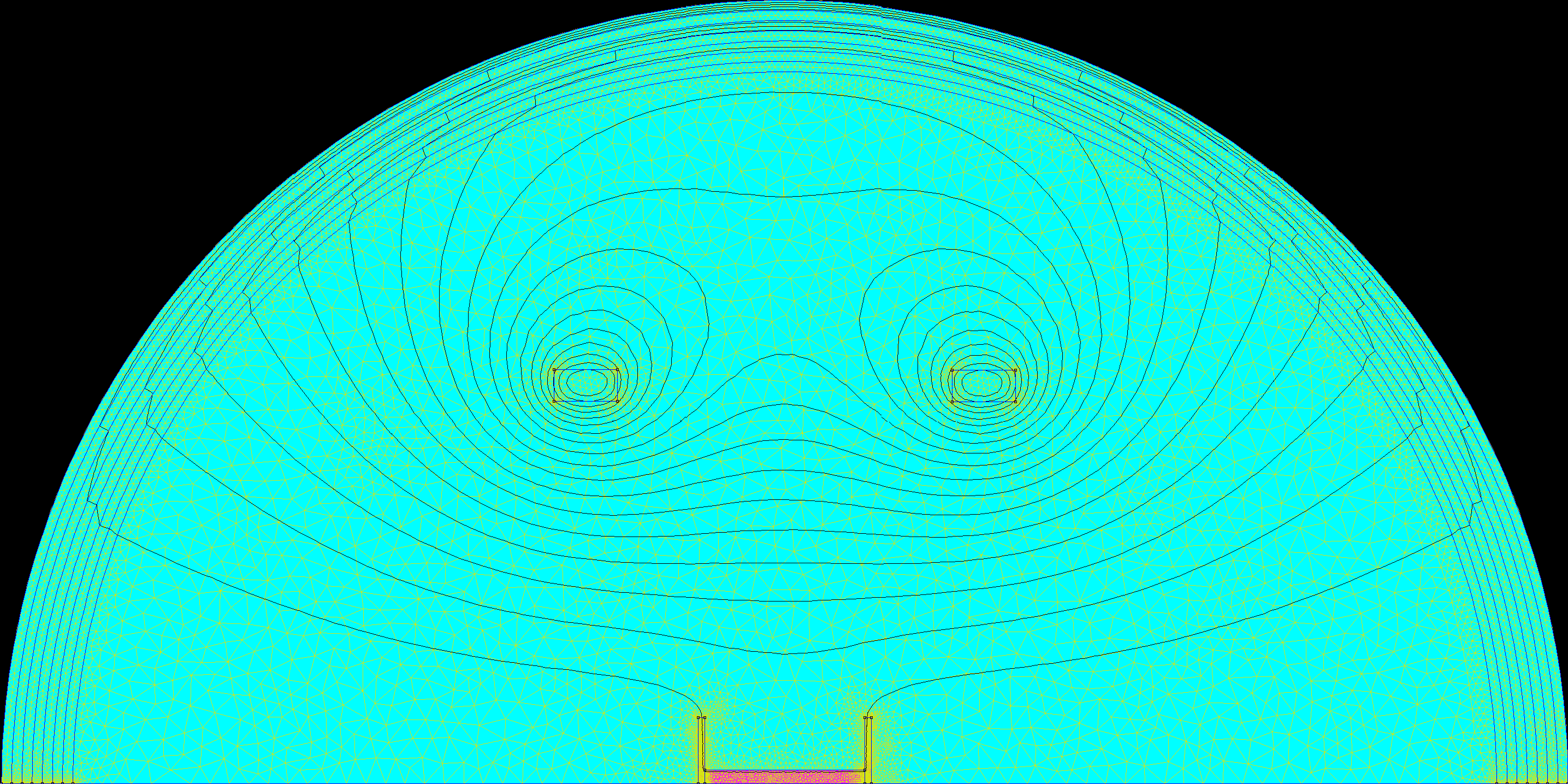Overhead Power Line Energy Harvester
Summary
This project concerns the design and development of an electromagnetic energy harvesting device to be used near overhead power lines that can be power a sensor package without the need for regular battery replacement.
Goal
Produce an energy harvester that scavenges electromagnetic energy from nearby power lines for a large power transmission client.
Approach
I generally approach engineering problems by first creating a mathematical model, then optimizing that model, then finally proceeding with product design.
There are many considerations for developing a model in this scenario, not the least important of which are the overhead conductor configurations, electrical current profiles, and proximity to external ferromagnetic materials that, taken together, bound available input power. The harvester model can be made more modular by first assuming that the electromagnetic field in which the harvester is placed is essentially constant in strength over the space of the harvester, and that field strength is given. The design can then be optimized over a few sets of reasonable input field strengths (gleaned from the research literature) with the hope that an optimized design for one field strength is also optimal for others – a claim that can be corroborated later. The advantage of this approach is that the properties of the transmission lines that influence the nature of the electromagnetic field are abstracted away from consideration, which in turn yields a modular mathematical model, and the problem of determining ideal device locations within the field becomes external to the model.
The initial phase of this project was dominated by reading the literature to ensure that I understood the fundamental equations governing the physics of interest. Because harvester core material does not entirely envelope the field of interest, the equations that one is typically exposed to in, say, a Physics II course do not exactly apply; certain geometric factors of the device become a major consideration for performance where they otherwise would not, and the mathematical model must incorporate these effects in order to be predictive. Unfortunately, the factor used to correct for geometric effects is very difficult to predict analytically, except in the most spatially-symmetric circumstances; due to this, the equivalent circuit model developed for the entire harvesting system requires a numerical estimate of just one parameter – the geometric factor –which is estimated by virtue of a Finite Element Analysis (FEA) solver.

Once the model was instantiated in MATLAB and the relevant geometric factors were found using FEA, I was able to reproduce results from a particularly germane engineering journal article (power calculations) and a graduate-level textbook (geometric factor calculations) with a high degree of accuracy. This gave me enough confidence in the model to move forward with optimization.
In order to form an objective function from the model, the FEA solution process must be entirely automated. This required a transition to open-source C++ solver libraries and the use of the MATLAB MEX C++ API. The complete code generates the geometry, meshes, and solves the system to obtain the geometric factor necessary to complete the model. The factor is fed into the equivalent circuit model, along with other design parameters, which together are used to obtain power output across a load of interest. The optimization problem concerns maximizing the dissipated power in the load.
The objective function requires approximately one to two seconds per evaluation – pretty slow, really, but sufficiently fast to solve the problem at hand. I was unsure of the smoothness of the objective function surface due to the numerical estimation component of the model, so I elected to use a direct search algorithm to find optima. The results showed that the initial assumption about field strength (that the maximizer for power is the same regardless of input field strength) was correct. The optimization resulted in over 50% improvement in power output over the initial design guess, which was based on a scaled-up version of somewhat related designs in the literature; not bad for the very first design iteration. It would have been quite difficult (and expensive!) to find this design via iterative prototyping.
With modeling and optimization complete, the first design drawings were quickly finished. This product is now in its initial phase of fabrication.